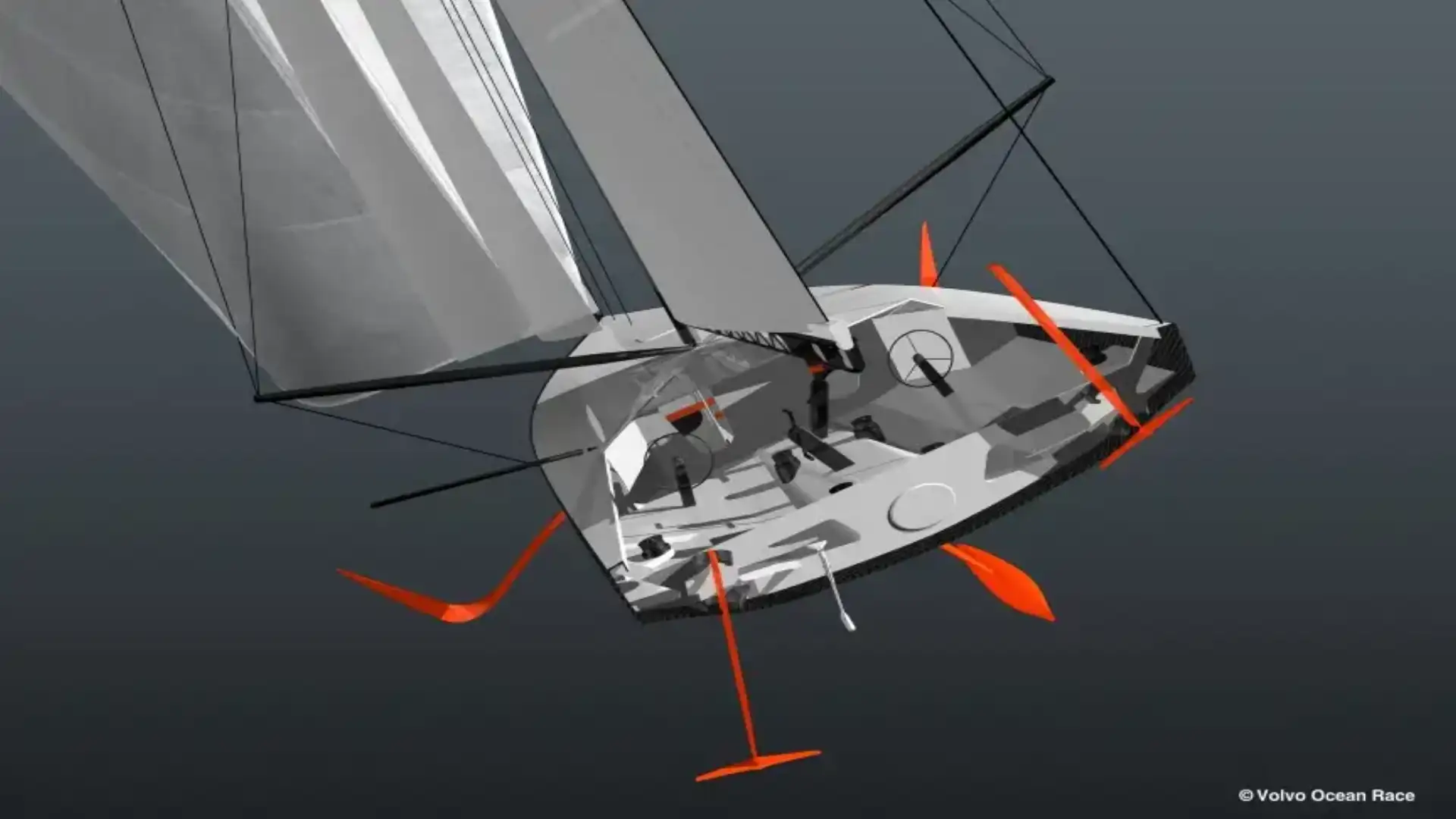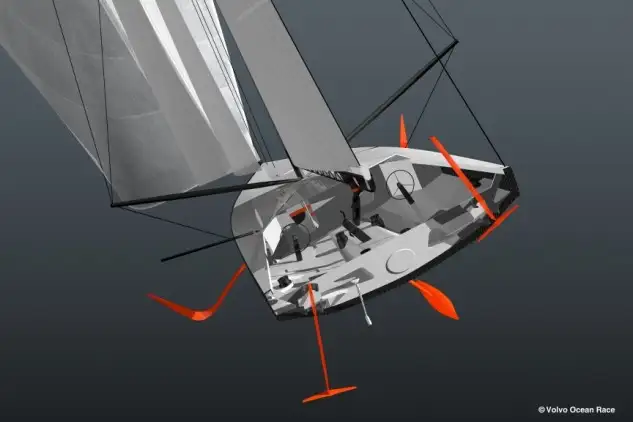
The Volvo Ocean Race presents in Gothenburg its plans for the future of the world's return
The Volvo Ocean Race presents in Gothenburg its plans for the future of the world's return
The Volvo Ocean Race today has revealed a number of radical initiatives that will create the hardest challenge at all levels of professional sailing and will strengthen the attractiveness of the 44-year-old world return for professional regatists, shipowners, sponsors, partners, host cities and fans.
As the preparations for the 2012-18 edition, which will be released on October 22, the regatta organizers have taken advantage of an event at the Volvo Museum in Gothenburg, the home of the main owners and sponsors of the regatta, to present a breaking vision for beyond the next decade.
Among the most striking aspects is the choice of a new 60-foot (18.29 meters) monocasque monocasque and foyer-assisted monocasque, designed by the French Guillaume Verdier, in addition to the introduction of a flying catamaran, also single-type and between 32 and 50 feet (10-15m) for the In-Port (coastal) regatas, for which a new design and construction process has been opened today.
The ocean stages will remain the key to winning the Volvo Ocean Race, but the coastal races will count a little more than at present, when they count only in case of a tie to points. This implies that winning the race in the future will require having experience both in ocean navigation on monotypes and in the competition of multicascos in the In-Port races, as in the two specialities you will have to compete basically with the same crew.
Main announcements of the Gothenburg event:
The biggest challenge in the world of sailing: from the post-2017-18 edition, the Volvo Ocean Race will be played in a 60-foot monocasco assisted by fils for the ocean stages and a flying catamaran between 32 and 50 pàes for the In- Port. Together, they will establish the Volvo Ocean Race as the greatest challenge of sailing at all levels and strengthen their reputation as the greatest challenge for a team in professional sport.
Monocasco assisted by Fails: The monocasco monotype of French naval architect Guillaume Verdier will use the latest generation of the technology of the Failing to make the ships incredibly fast and spectacular. The number of crew is likely to be between 5 and 7, while maintaining incentives for the mixed crews of men and women and the young regatists. The race will build eight new ships and deliver them from January 2019. They will be available to be rented by the teams to reduce the start-up costs of the campaign, and the sponsors involved in the current edition of 2017- 18 will have priority for this when the Notice of Race and the trade participation agreements are published this October.
Compatibility with IMOCA: The design plan leaves open an option to allow the new ship to become, economically and quickly, a boat fully compatible with IMOCA standards. The 60 feet of the IMOCA class, which are used in emblematic races such as the Vendée Globe, have led some incredible technical innovations over the past decades.
They will be flying catamaran for the coastal: In addition, the race will create a bidding process for a new flying catamaran, a 32-50-foot monotype that will be used in the coastal regatas and that will equip some of the technology that is already familiar to us by the America's Cup and other new multicascos, though in a single-type format.
A sustainable future: The race bases its action on sustainability on three pillars: reducing its own footprint, maximizing its impact using its global communications platform and leaving a positive legacy in any of the places it passes through. Centry into an association with the United Nations Clean Environment Campaign, attention will focus on the call for action 'Turn the Tide on Plastic' (changes the trend over plastic). A partnership with 11th Hour Racing will provide the resources to allow a significant expansion in all science, education and ocean summit programs. AkzoNobel will further promote the education and awareness programme. The long-term ambition of the Volvo Ocean Race is to reduce and then eliminate the use of fossil fuels in future ships, while maintaining the security and performance of communications, as well as developing new construction methods and operational strategies for the race in general.
New travel and stop formats: The race plans to make great changes in the course and format of the stops over the next decade, decisions that will strengthen commercial attractiveness and preserve its sports stability. The race has a commitment for two more exits with its headquarters and key sponsor, the Spanish city of Alicante, but some of the future editions could start and / or end outside of Europe, and could include an unstopped stage around Antarctica, and even a round of the world without stopping around the planet. But while the routes may vary, the race will commit to visit North America, South America, Australasia, the Great China, and at least five of the most important European markets in at least one in two editions, thus ensuring commercial success before the final routes are defined, making it easier for the sponsors to engage for two cycles with the teams. In addition, the host cities will be able to choose the format of their stop between a range of various formats, from a 24-48 hour 'pit-stop' to five-day short formats, through the traditional two-week stop format. The bidding process for the next three editions is launched today.
Activity of the race every year / Possible change to a two-year cycle: The Board of the Volvo Ocean Race has asked the management of the race to study the feasibility of changing the competition to a two-year cycle. This process is still under way, but what is already true is that in the future there will be some race-related activity every year. This plan represents a clear development with regard to the current situation, where there is a gap of more than two years between one edition and the next.
A road to the Volvo Ocean Race: Volvo Car Group and Volvo Group will become official sponsors of World Sailing, as part of a long-term strategic plan for a clear way forward for the next generation of regatists and their sponsors. The race will establish the Volvo Ocean Race Academies as part of the future contracts of the host cities and will also serve as a trampoline for the Olympic regatists towards the ocean sail, provided that ocean navigation is included in the Olympic Games, which could become a reality as an exhibition sport in Tokyo 2020.
Global Team Challenge: a leadership and team performance development programme. The organizers will introduce a new leadership and team performance development programme for companies, focusing on the main lessons learned in areas such as leadership and teamwork. The program will have a parallel ocean race, called Global Team Challenge, designed especially for sponsors to offer their employees a unique experience of sport under conditions almost identical to those faced by professionals. The Global Team Challenge will focus on security, be part of the Volvo Ocean Race route, in adapted versions of the current Volvo Ocean 65 and with a proportion of professional regatists by eight amateurs. The basic package will be included in the commercial offer for team sponsors, with activation opportunities to support human resources programmes for employee development, recruitment and talent acquisition, as well as additional opportunities for the activation of B2B and media. This program will also serve as a new entry scenario for future team sponsors in the race.
Celebration of the 50th anniversary: The Volvo Ocean Race was born in 1973 as Whitbread Round the World Race, so in 2023 it is half a century of life. The organization is assessing a special 50th anniversary race that will honor the legends of the candle that have taken part in it.
The next edition of the Volvo Ocean Race will leave Alicante on October 22, 2017 and will visit a total of 12 cities based on the five continents. The teams will travel over 46,000 nautical miles (83,000 km) to the Hague target at the end of June 2018.
© 2024 Nautica Digital Europe - www.nauticadigital.eu












